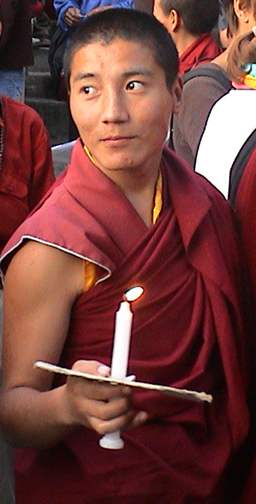"Voices In Exile"
A documentary film on the lives of Tibetans in exile from a Tibetan perspective
• Director and Cinematographer: Tenzin Wangden Andrugtsang
•Location: Northern India
•Running time: 1 hour, 5 minutes, 27 seconds
•Available: DVD and for screenings
•Producer: Joe Mickey, Northern California
•Associate Producer: Sazzy Varga, Southern California
Produced in association with The Tibetan Photo Project / Cameras for Culture on the Web at
http://www.tibetanphotoproject.com ‘Voices in Exile’ documentary released
In 2000 The Tibetan Photo Project, founded by Joe Mickey and Sazzy Varga, began building the first organized exhibit and collection of quality photos taken by Tibetans living in exile in India, images of the Dalai Lama, informational texts and rare 1932 photographs of Tibet.
These rare images of life in exile establish one true Tibetan voice through media coverage for The Tibetan Photo Project exhibits, Website, lectures and now the 2005 DVD production and release of "Voices in Exile" filmed and directed by Tenzin Wangden Andrugtsang.
Mickey met Wangden online about four years ago when corresponding via email with the office of the Dalai Lama where Wangden worked. Mickey asked if he would take some photographs. “Wangden had been a teacher and is a life-long activist. His grandfather is one of the original freedom fighters for Tibet.”
Given the strength of his stills and the history of his efforts for Tibet, Mickey asked if he would be interested in making a film. Wangden, after accepting, was supplied with a professional-level camera, production equipment and an editing bay in India.
"As the project progressed, it was important to stay true to the mission of The Tibetan Photo Project," says Mickey. "We didn’t want any Western interference with the content of the film. It was important that ‘Voices in Exile’ be 110 percent Wangden's design."
On Nov. 15, 2004, the first short arrived. "Refugee - An Account" was filmed in northern India as Wangden experienced the process of directing, cinematography and editing. That piece was incorporated into the final cut of the film. The work-in-progress was shown at Centenary College in Shreveport, Louisiana and was extremely well received there.
“Like the rest of this project, this film was produced on a begging bowl budget,” Mickey added.
The combined circulation of publications that tell some part of Tibet's tragedy, through The Tibetan Photo Project, approaches 26 million. Over 1,500 websites link to the project, which has opened the door for some of Tibet's story to be told through slideshows, lectures and radio interviews in Canada, California, Louisiana, Virginia and Colorado. Pubic television also produced a polished four-minute piece that was broadcast in Louisiana statewide.
“The perspective provided from the modern history of Tibet and China reveals a great deal about the nature of China's future leadership. The West has a great deal to learn from the experience of the Tibetan community,” said Mickey.
From exile, the voice of the Dalai Lama has defined Tibet to the world.
For his insistence on a non-violent solution with China, the Dalai Lama received the Nobel Peace Prize in 1989.
With the help of the Indian government and international aid, he has also built a community of between 130,000 and 150,000 Tibetan refugees, who followed him out of Tibet, with another 1,000 to 3,000 entering the community by escaping through the Himalayas annually.
China current leadership has chosen enforcement of strict and brutal policies designed to complete the cultural genocide of the Tibetan culture. Given China’s rise on the world stage as a social, political and military power, China is not likely to relent any time soon. In order to maintain any support in today’s world, the Tibetans will need to continue to create voices for years, if not decades to come.
Mickey says, “There is a lot of support for Tibet and we set goals and the help seems to find us. The Website is the core of our effort. There will be more films and exhibits. It is crucial to the survival of the Tibetan culture that the Tibetans find new ways to keep telling the world about their tragedy and this effort, in some small way, hopes to add to the continuation of the voice from the Tibetans.”

